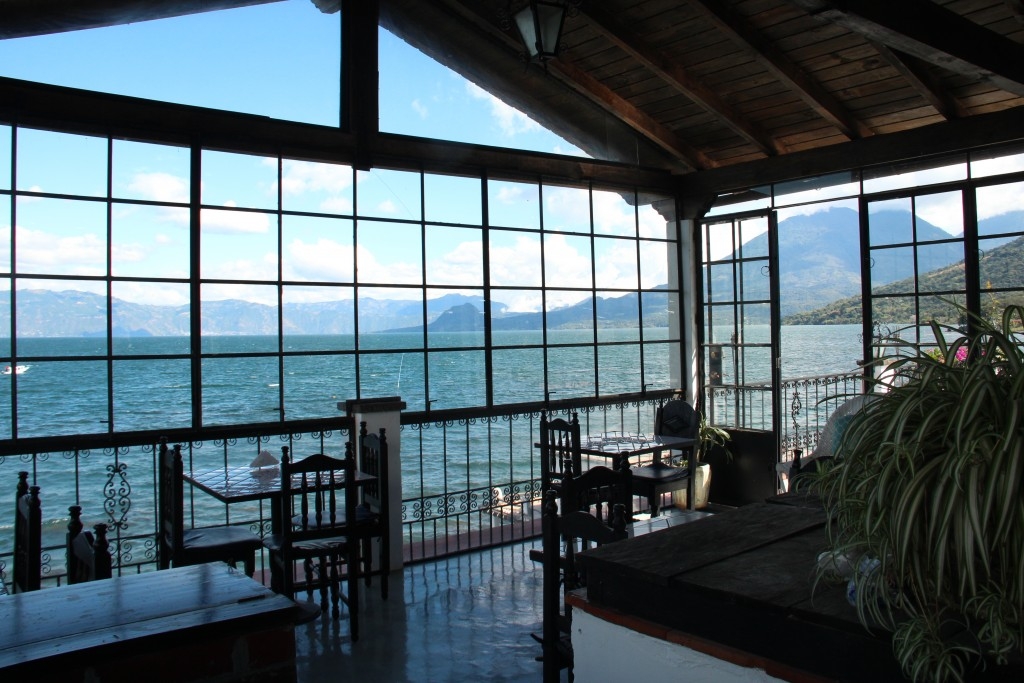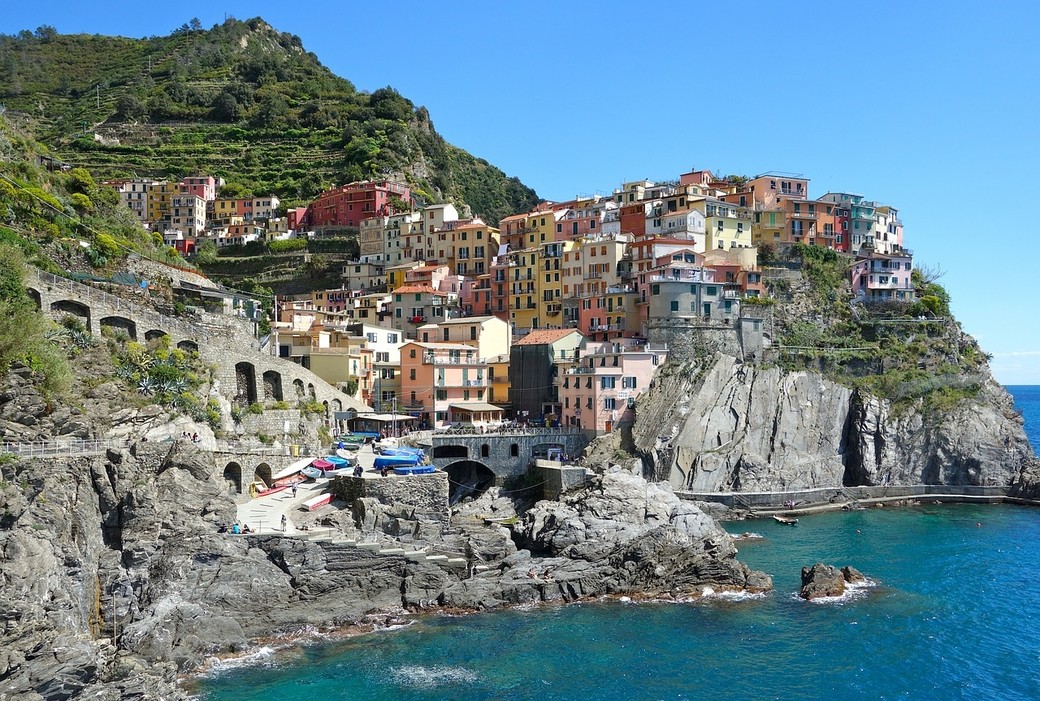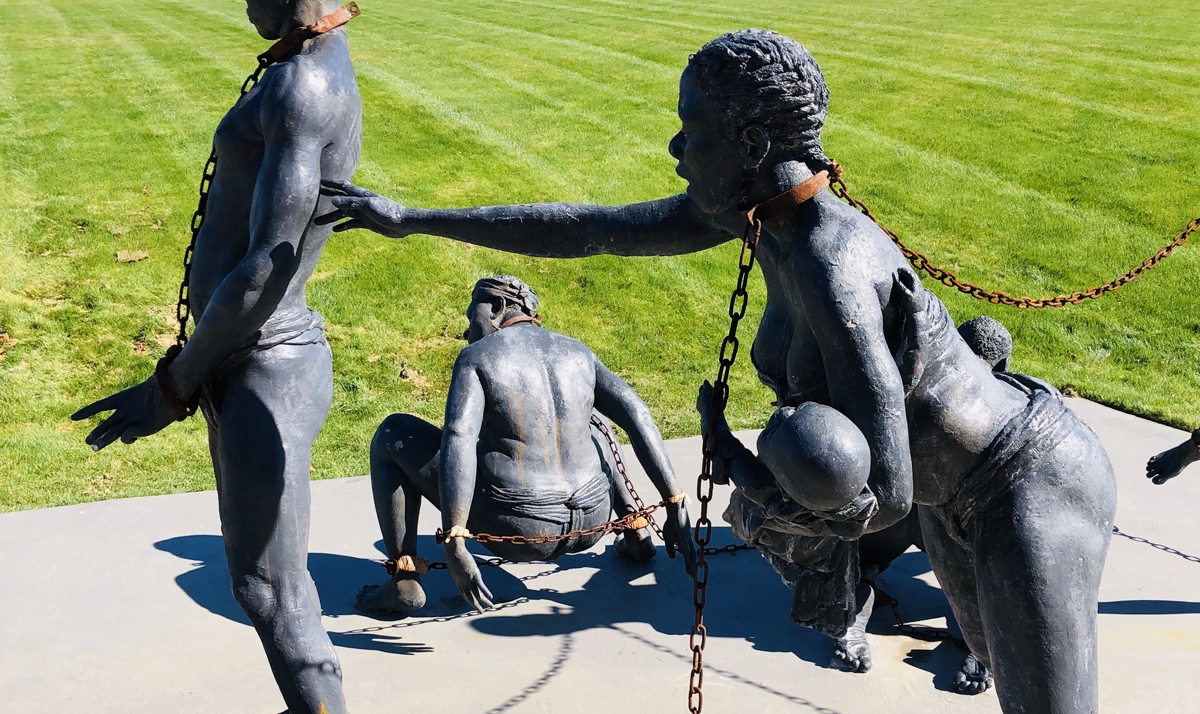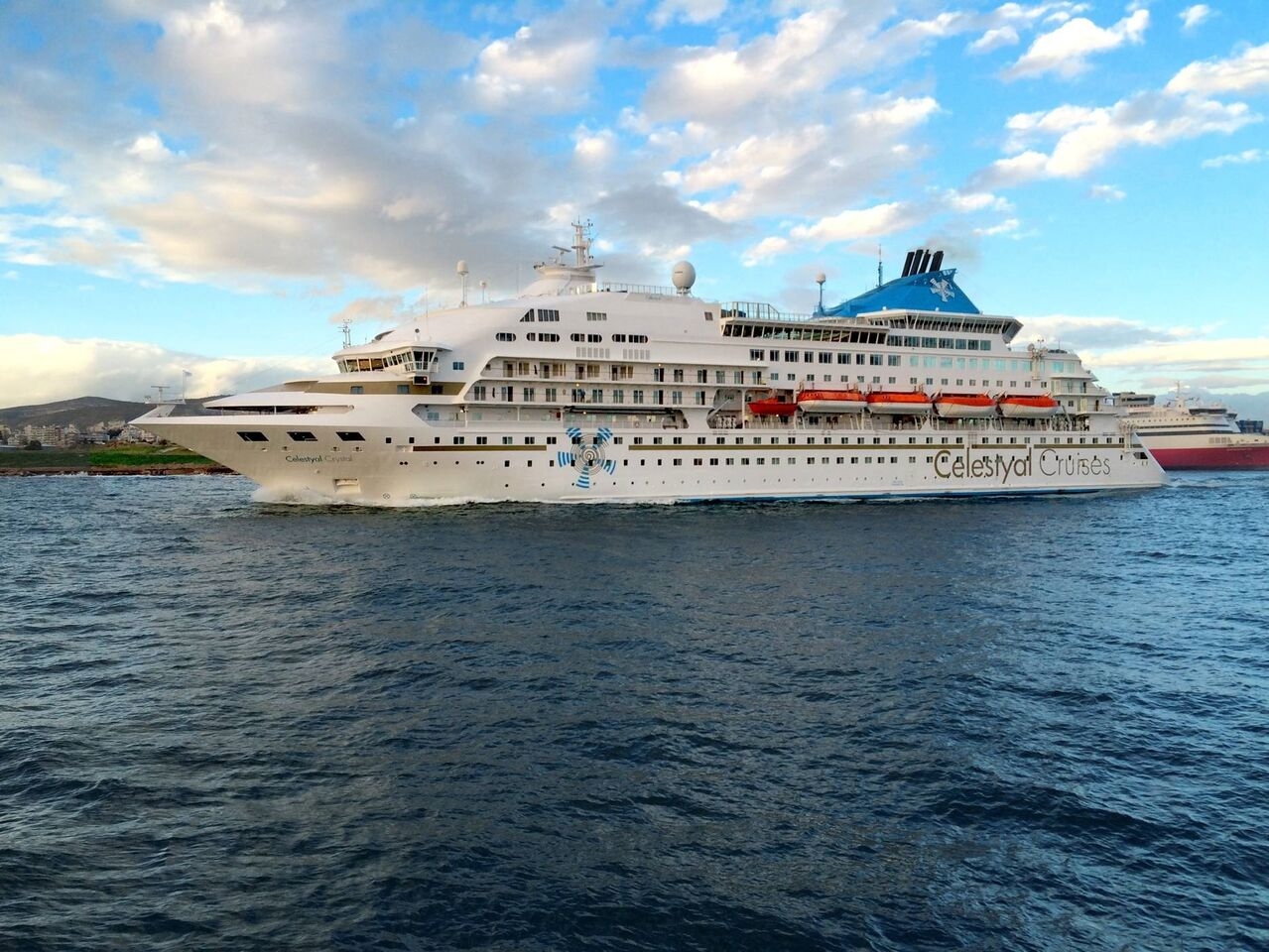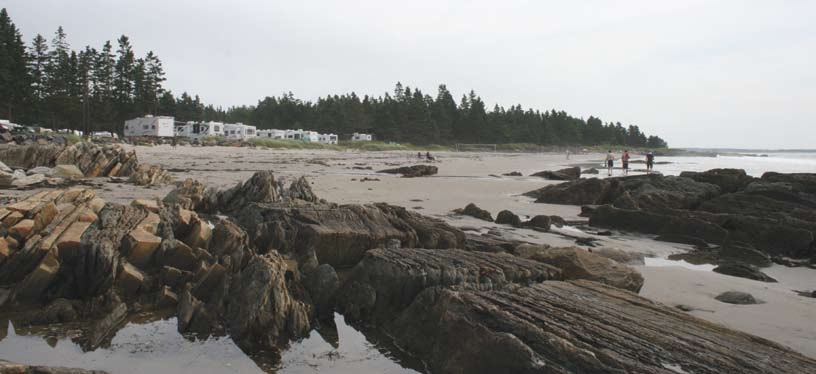
RV Road Trip — Family of Five – One Heck of a Ride!
The idea of traveling in a recreational vehicle (RV) with your spouse and kids for three weeks in the summer sounds like one of those amazing things you need to do in life when your kids are the right age. Imagine traveling for three weeks in extreme comfort in a 35 foot recreational vehicle. I always had an interest in purchasing an RV, so I figured why not rent one for a month and give it the old test drive?
These days, RVs are so sophisticated they can be used year round. In fact, there is a whole stealth community of permanent RV users in North America who virtually live and travel in these “road homes”. Skiers love them too and often you’ll see RVs parked around ski resorts. Of course, summer is still the most popular time for travel.
In Canada, RVs are easy to come by with national chain outlets and local RV dealerships renting them out. A growing number of campgrounds also offer on-site rentals. Most RV rental companies provide “housekeeping” packages (dishes, pots, pans, etc.) for a nominal fee. Even if you’re driving or towing an RV for the first time, features like automatic transmissions, power brakes and steering and extension mirrors on both sides of the vehicle make it easy for experienced drivers to adjust to the difference in size, height, and weight. Our RV was amazing. There was a full bathroom with a shower, a kitchen (with lots of cupboard space), a stove, oven, microwave and refrigerator. There were even two flat screen televisions, which were convenient to have during a rainstorm. There was a bunk bed over the driver’s section and two very comfortable fold-out beds in the front. The design of these RVs is quite exceptional and every detail has been worked out for maximum space and comfort. The sound system was also fantastic.
When I arrived home with the Family Truckster, the kids were very excited. They had loads of fun selecting their sleeping spot and packing the RV for the journey. We took the option of renting a bike rack that easily attached on to the back of the RV. I must admit that driving the 35 foot living room on wheels was much easier than I anticipated. The trick is to always have a spotter when backing up or making slow and wide turns. The rideis very smooth and it really was as easy as driving my car. Never exceeding 100 km per hour, I averaged 750-800 kilometres before spending between $130-150 dollars to fill the tank. This was much better than I had expected. We loaded the vehicle up with a full stock of groceries and we were on our way. I was excited and so were the kids.
The first part of our trip was to take us from Ontario’s Muskoka region through Algonquin Park down to Ottawa, across to Montreal and up to Quebec City, where we planned to stay for 3 days. Part two would take us to New Brunswick followed by a ferry to Nova Scotia and then later another ferry to Maine and back home via Vermont and Quebec. We were ready to roll. I got a Rogers rocket stick so I could get wireless access on my laptop and we were on our way.
QUEBEC CITY
Believe it or not, Québec City has an RV park in the middle of Old Québec right next to the port, conveniently situated right next to the city’s bike pathway. After a full day of driving we took the kids to get their sillies out at Village Vacances Valcartier, a massive waterslide park 20 minutes North of Québec City (www.valcartier.com). In winter, it’s a snow tubing park but in summer it transforms into Canada’s largest water-park with rides and slides for everyone. The owners also offer daily white river rafting expeditions on the Jacques Cartier River.
Old Québec has such charm and it really comes alive in the summer. The world renowned Cirque de Soleil presented Chemin Invisible — a free performance all summer long. Cirque performers make their way through the streets of three neighbourhoods in Old Québec and meet at Îlot Fleurie under the Dufferin-Montmorency highway overpass. Their show begins at nightfall and lasts 60 -70 minutes including the parade through the streets. The shows are nightly all summer until Labour Day.
Be sure to catch renowned Québec artist, playwright, film director Robert Lepage’s Image Mill, a mega projection (sound and light show) that recounts Quebec City’s 400 years of history using the Old Port’s 600-metre wide grain silos as a screen. This can be seen nightly from the river front in the old port.
Old Québec City is a UNESCO World Heritage Site and is North America’s only remaining fortified city. It celebrated its 400 anniversary in 2008. Different guided walking tours are available through the tourist bureau website (http://www.quebecregion.com). We made our way on our bicycles visiting the Plains of Abraham, the National Assembly Buildings and then biked along the shoreline and back up through the streets of Old Québec gazing at the beautiful murals and well manicured lawns and parks.
NEW BRUNSWICK
We left Québec City and made our way north along the St. Lawrence and up past Rivière-du-Loup towards the New Brunswick border. It is a comfortable day’s drive from Québec City to the quaint seaside village of Saint Andrews, New Brunswick, a town that has been welcoming vacationers for more than 100 years. It is home to the Fairmont’s Algonquin Hotel and Algonquin Golf Course is said to be the best course in the Maritimes. The area boasts whale watching, the Huntsman Marine Science Aquarium as well as sea kayaking. We spent a day exploring the Kingsbrae Garden and caught the daily lady bug release. This 27 acre site seems overwhelming on a hot summer day but each section is so different from the last that you never lose interest. I am glad I checked with New Brunswick Tourism who recommended Kingsbrae Garden as a family activity. It was not something I would have thought to do but it turned out to be one of the highlights of our time in New Brunswick.
NOVA SCOTIA
We were excited to leave for our next adventure in Nova Scotia. We drove to Saint John, NB to board the Princess of Acadia ferry (http://www.acadiaferry.com) that would take us from Saint John to Digby, NS.
We strolled the decks and felt the Bay of Fundy wind in our faces as we searched the bay for a whale sighting. We were rewarded, so be sure to bring binoculars.
We rolled off the ferry at Digby at headed for Kejimkujik National Park in Nova Scotia’s interior. This traditional Mi’kmaw land is a 381 square kilometre biosphere reserve rich in plant and animal life. Lake Kejimkujik is affectionately referred to as Keji and is a beautiful dark lake similar in colour to steeped tea. Eighty per cent of Kejimkujik Park is accessible only by canoe, including 46 wilderness camp sites.
After thoroughly enjoying biking, swimming and camp fires nights at Keji, we headed out again towards the coast to place called Rissers Beach Provincial Park (www.novascotiaparks.ca). RV camping does not get any better than at Rissers. This is literally RV camping on the beach where you can experience firsthand the splendour of the Atlantic. The kids spent the days in the water swimming and building sandcastles and running along the extensive boardwalk alongside the beach. The roar of the surf, the warmth of a fire, a great beach and a wonderful home cooked meal courtesy of the RV kitchen — RV life on the road really doesn’t get any better. Camp or visit the beach for the day.
Along the south shore, there are numerous family activities and stops that are worthwhile including the scenic village of LaHave, NS – capital of New France from 1632-1636, and now a National Historic Site.
We left Rissers to drive to Lunenburg, a famous seaport and British settlement founded in 1753. In its glory days it was the Maritimes’ shipbuilding capital and important offshore fishing sea port. It is the birthplace of the Bluenose and home to the High Liner Fish company. Today tourism is the major industry and the importance of the town has been recognized by UNESCO, who named it a world heritage site because of its unique architecture which features grand churches, wooden houses and a rectangular grid layout that is one of the best examples of a British colonial settlement. We spent several hours visiting Lunenburg’s Fisheries Museum of the Atlantic and toured the aquarium.
The next morning we drove along the Atlantic Coast toward Peggy’s Cove. You could see the Atlantic ocean crashing up against the rocks. We toured the small community and then had a hearty breakfast at the Peggy’s Cove Restaurant. The children were excited and asking all kinds of questions about our adventure for the day, sea kayaking.
We had arranged to go out for several hours in Margaret’s Bay with Eastcoast Outfitters (www.eastcoastoutfitters. net). Margaret’s Bay was at one time a small fishing village but that industry has collapsed and the locals turned to the area’s natural beauty and resources making tourism and outdoor recreational activity a key part of their economic development.
This shop is first class all the way with top notch equipment and excellent guides. We were outfitted with life vest, paddles and skirts and then matched with our own kayaks. We headed out with our super friendly, expert guide, Paul (a former Department of Fisheries and Oceans civil servant from Ottawa) who had retired and returned to Nova Scotia to live the ‘dream’. He was an excellent kayaker and we felt completely safe with him as we manoeuvred for a two-hour trip along the coast, sticking close to the shore around sheltered coves. Paul explained the local marine life in the shallow water and told us stories of the community and the sea. (www. eastcoastoutfitters.ne).
We left Margaret’s Bay and made our way into Halifax for a late afternoon and early evening of walking around. We took in the Busker Festival and visited the port area. Nova Scotia has over 550 festivals each year (www. novascotia.com) including Lobster festival, Scallop Festival, Tall Ship Festivals just to name a few..
The next morning we drove the fifty miles north of Halifax to experience the full effect of the Fundy Tides in at Tidal Bore Rafting Park. Tidal bore rafting is similar to white water rafting but instead of riding river water you ride a tidal bore. As water from the ocean rushes inward and crashes into the water exiting towards the ocean. Riding the tide is one of the craziest but greatest experiences you can do with your family. After a couple of hours of tidal bore rafting you then get to go mud sliding. This is a uniquely Canadian experience and was the favourite moment of the trip for all of us. Bring old clothes, sneakers and lots of soap. The site is open year round but tidal bore rafting is from May to October (http://www.tidalboreraftingpark.com).
Next up was Annapolis Royal, home to Canada’s earliest settlers and originally known as the Habitation at Port-Royal. Founded by Samuel de Champlain in 1605, Port-Royal changed hands many times and ultimately surrendered to the English in 1710. It was the capital of Nova Scotia for about 40 years until Halifax took over the title in the 1750s. Annapolis Royal is said to be one of the oldest continuously populated towns in North America. We parked the RV on a side street and wandered around in this idyllic town where time seems to stand still. We visited the Fort Anne National Historic Site and the Annapolis Basin Museum. Both are very impressive and provide insight into the daily life in New France. After two weeks in the RV, we decided to stay one night at the Auberge Wandlyn Inn Hotel in Annapolis Royal.
The next morning we were up and on our way to the Digby Scallop festival. After touring around Digby, we headed towards Yarmouth to get the afternoon CAT Ferry to Maine. The Discovery Channel called her one of the World’s Top 10 “Super Ships” and you feel like you are on the bridge of the Enterprise from Star Trek. Serving Maine and Nova Scotia – two of the world’s top vacation destinations – The CAT’s 6 hour service from Yarmouth to Bar Harbor or Portland, Maine can save 12-16 hours of driving time. We loved the sleek looking ferry and enjoyed its movie theatres, and on-board dining. We arrived relaxed and refreshed in Maine ready to take our RV road trip to the United States. The CAT Ferry was phenomenal. Sadly, in December 2009 the service was permanently cancelled due to a downturn in the economic climate. Hopefully this wonderful service will return to ferry people between Novas Scotia and Maine in the not-to-distant future.
We arrived in Maine at 9:00 p.m. and quickly cleared customs. We had a short twenty minute drive north to our destination, the LL Bean 24 hour store in Freeport, Maine. One of the cool things about LL Bean is that RVs can park for free overnight in the oversized lot. We joined about ten other RVs and shut down for the night. After a half day in Freeport, we were anxious to get to our next stop which was Kennebunkport, Maine. We hit the jackpot when we pulled into the beautiful Salty Acres Campground, located just outside the village of Kennebunkport near Goose Rocks Beach. Salty Acres has seen several generations of families returning annually. RVers and campers can choose an open sunny campsite or a quiet wooded one. We chose a wooded patch close to the entranceway and only meters from the campground’s pool. The campsite has wonderful bicycle trails. It was good to just lay low and enjoy the area and the RV for a couple of days.
We had a nice campfire and did all the campfire songs and stories and just really enjoyed the atmosphere. On our second day, we decided to go into the town Kennebunkport to get lunch at the famous Clam Shack, a legendary lunch place right in the middle of town. Voted by Epicurious.com as one of the top ten seafood shacks in America, the Clam Shack serves up fried clams that persuade food-loving travelers (including us) to detour many, many miles for the taste of these deep fried morsels. The lobster rolls at the Clam Shack also are said to be the best in Maine and after 30 years of making their famous lobster rolls at the Clam Shack, Steve decided to create “The Maine Lobster Roll Kit”. Each Kit Includes: 1lb of fresh picked lobster meat, 6 traditional Maine rolls, 3oz of Clam Shack mayonnaise and a recipe card. We also took a couple of pounds of lobster back for a dinner boil at Salty Acres that evening.
Maine is a summer hotspot for tourists and there are lots of them. However, there is a lot to do and it is easy to take advantage of the numerous beaches. We found the best beaches were York Beach, Ogunquit Beach but my personal favourite was Goose Rocks. After three weeks, we were beached out, lobstered out and biked out. It was time to go home but none of us were RV’d out. It was so comfortable and compact, we had become quite used to it. It was a leisurely day’s drive from Maine through New Hampshire and up through Green Mountains area of Vermont. We stopped for lunch at a wonderful diner in Montpelier, Vermont and then headed north to the border and home to Ottawa. Would we do it again? In a minute. Do we recommend it for any family? Absolutely. Am I proud to be an RV Man? Damn straight. n
NOTE: Our RV came from Motor Home Travel Canada Inc. in Bolton, Ontario. They provide excellent customer care and gave us great advice on how to maximize our RV experience.http://www.motorhometravel. com.
Reserve campsites at Nova Scotia Provincial Park early as they book up early (Reservations accepted after April 3, 2010).
NOTEABLE RV RESORTS IN NOVA SCOTIA: White Point Beach Resorthttp://www.whitepoint.com, Hubbards Beach Campground and Cottageshttp://www.hubbardsbeach.com, Dunromin Campsite & Cabins, Granville Ferry, NShttp://www.dunromincampsite.com/
If you are visiting Halifax-Dartmouth and are in a RV or camping you can‘t do better than Shubie Park Campground conveniently located in Dartmouth on the quiet shores of Lake Charles. Here you’ll enjoy a peaceful, wooded setting but can hop on your bike and easily get to the greater Halifax area. We enjoyed the hustle and bustle of metropolitan Halifax in the day and the tranquility of Shubie at night. http://www.shubiecampground.com

